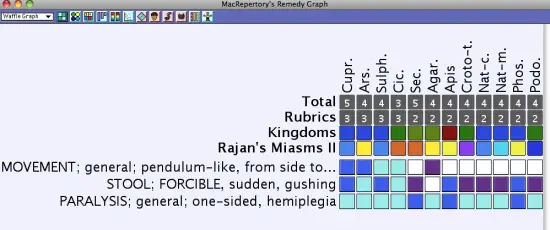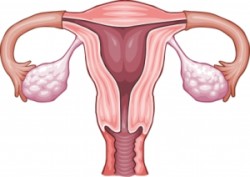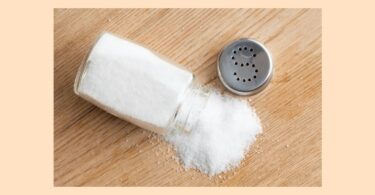This is the case history of a young girl who I treated for the first time almost ten years ago. From her case I learned a lot about the importance of her particular remedy around birth and how the right remedy can make a wonderful change in the situation. Her name is Luisa and she had a very dramatic birth. When I saw her for the first time she was five weeks old and in a very bad condition.
How everything began
Luisa’s mother’s first pregnancy three years before she gave birth to Luisa, proceeded without any serious problems and could be termed a healthy pregnancy. Luisa was her second pregnancy and there were no complications, except that the contractions didn’t set in spontaneously. When she was nine days overdue, her doctor in the hospital decided to induce labour. Her wish was to wait a little longer, but there was no room for that. In the hospital they didn’t want to wait any longer.
After giving her labour inducing medication, she got strong and violent contractions, but there was a problem. The baby’s head got stuck and after trying and pressing for a long time, there was no progress. Finally they had to proceed with a caesarean section. Luisa was under great stress. While the doctor was trying to remove her from the womb, the placenta suddenly detached, a severe complication with fatal consequences. Her heartbeat stopped and she was given immediate resuscitation. Only after ten minutes did her heartbeat come back.
Luckily she survived, but with bad consequences: Due to lack of oxygen, she developed a brain oedema accompanied by convulsions (epileptic fits). She also showed paralysis in different parts of her body (left arm, left leg and facial nerve). When Luisa was five weeks old her mother was able to take her home, but she was still not in good condition. The doctors told the parents she had to have regular check-up’s, to see how she was developing physically and mentally.
The first consultation
When I first saw Luisa, she was very weak and still in a serious condition. Her muscular tension was quite low, but on the other hand, she had a strong tendency to overstretch her upper limbs. Her gaze was constantly drawn to the top right hand corner of her eyes, accompanied by a strong pendulum-like motion (Nystagmus). Luisa wasn’t able to fix her gaze on any objects. The mother was desperate and distraught, and she could hardly speak without starting to cry.
How did you experience the situation?
Mother: “I felt like I didn’t get enough time to come into my own rhythm. I felt forced by the doctor and he was far too impatient. After taking the labour inducing drugs, it felt like being in a storm. Not enough time to react adequately.”
You felt forced….
Mother: “Yes, he forced me too much and I was under huge pressure. Everything then went too fast, too intense. No time for coming into my own breathing rhythm. I think Luisa must have felt this pressure as well. We both got stuck in this pressing situation.
How is Luisa since she’s been at home?
Mother: “Luisa screams a lot during the day and night. She’s having real screaming fits: her body is getting stiff and overstretched, her chin starts to tremble, she’s making fists and strikes with her hands. It is quite difficult to calm her down and it takes her a while to relax again.”
How is her digestion?
Mother: “She releases a stool every 2 days. Her bowels are very active, mostly the stool forces out with a lot of pressure, like an explosion.”
Can she maintain her body temperature?
Mother: “Mostly she feels warm and during these screaming fits she flushes and her face turns into a strong redness.”
Can you breastfeed her?
Mother: “Yes. Sometimes she becomes impatient and is unable to drink fast enough, but mostly breastfeeding works well.”
Analyzing the case
“Pressure and force” are the two keywords that run through the case.
The mother felt forced to do something out of her natural rhythm. After taking the labour inducing medication, she experienced the situation like a storm and her body couldn’t cope with it. Also Luisa got stuck. She felt there wasn’t enough time to adapt to the situation, neither for her, nor her baby.
The mother and her baby were showing the same symptoms. The pressure and force which the mother experienced during labour, are also the key symptoms experienced in the newborn:
-
Screaming fits
-
Eyes drawn to one side
-
Stiffness of the body and a tendency to overstretch (Opisthotonos)
-
Forcing stools, gushing out like an explosion
Rubrics from the Repertory1
EYES; MOVEMENT; general; pendulum-like, from side to side (21)
STOOL; FORCIBLE, sudden, gushing (99)
GENERALITIES; PARALYSIS; general; one-sided, hemiplegia (129)
Prescription
The remedy I gave Luisa was Cuprum metallicum, first in a single dose of C 30. The reaction was remarkable. After two weeks she was able fix objects with her eyes. This was a very touching moment for the parents, who hadn’t been able to bond with their baby through eye contact until this moment. She was also calmer, but with more energy. Her screaming fits were reduced and the stool came out with less pressure.
In the following months she made gradual progress on all levels. If there was a small relapse I repeated the remedy (in increasing potencies up to XM). Luisa did well with the remedy for a long time and it was a pleasure for me to observe her progress during the follow-ups. Only the paralysis in the left arm did not stop completely. All other paralyses disappeared.
In a few weeks Luisa will be celebrating her 10th birthday. I am still seeing her from time to time, either to treat some acute issues, or just to control her development. She’s doing very well in school. Only in math does she need more time to understand her tasks, but mostly her mental and physical development is progressing very well. I would not have imagined this kind of progress when I saw Luisa for the first time.
Cuprum metallicum – Attack and defence
Cuprum is placed in the first line of metals in the Periodic Table along with Zincum, Ferrum, Niccolum, and Manganum. As with the other metals, Cuprum also has the theme of attack, defence and performance. The main feeling of Cuprum is that of being attacked.
He feels he has to be prepared for a sudden attack and has to attack back. In children, this feeling is seen in the form of a fear of being approached; the child cannot bear anyone coming near her and reacts immediately by striking, shrieking, biting, spitting, rage, kicking, attacking with fists, etc.1
Cuprum metallicum – A polychrest in obstetrics and neonatology
There are many indications during pregnancy, around birth and in early childhood where Cuprum is indicated. If we take a look at the physiological processes around this specific time, we can understand better why Cuprum is so important: During pregnancy the copper value is rising up, while the iron is going down.
Also, the liver of the foetus contains up to ten times more copper in relation to an adult. So physiologically, during this time around birth, mothers and babies are already much more in the Cuprum energy field. This explains also their receptivity to external influences, like being forced or pressured to any reaction. Even giving women too much iron during pregnancy can force them into re-action, bringing them out of their natural rhythm.
Mythology – Venus and Mars
We can also observe the strong relation between iron and copper in mythology and alchemy. In alchemy, copper is the female metal related to the planet Venus, while iron represents the male energy and is related to the planet Mars. Venus in Roman mythology was associated with love, beauty and fertility like her Greek equivalent Aphrodite. Mars on the other hand , in Roman mythology, represented war.
In his painting,”The Birth of Venus”, Sandro Boticelli, depicts the goddess Venus, having emerged from the sea as a full-grown woman, arriving at the seashore in a scallop. The scallop (Pectens Jacobaeus) belongs to the mollusc family in the animal kingdom, which is homoeopathically often indicated for female diseases (like Sepia, Venus mercenaria, Murex purpurea).
Interestingly, the molluscs use a copper molecule in their breathing metabolism, which is called hemocyanin. As we all know very well from Sepia, giving birth is a very vulnerable moment. They need a lot of support and a safe environment to open themselves up. This is also a strong aspect in Cuprum metallicum, which has a lot of similarities to the mollusc family.
Other indications of Cuprum metallicum:
-
Ailments from: night watching, lack of sleep, rudeness of others, fright, bad news (i.e. threatening caesarean section), suppressed emotions.
-
Icy cold body, bluish discolorations.
-
Twitching of muscles, external trembling.
-
Restlessness in bed, especially between contractions.
-
Biting
-
Labour pains: distressful, with vomiting, cramps, irregular, Opisthotonus, intensive thirst for cold drinks, rumbling in her bowels.
- Newborn baby: ailments after stressful birth situations, green amniotic fluid (often a sign of stress and panic during birth), colic, screaming fits, convulsions, restlessness and sleeplessness.
To find her own rhythm during labour, a woman needs to be in a safe and supportive environment. It would be ideal to have a midwife who can give her the love and strength to find her individual pace. With the right setup and under gentle, but supporting circumstances, most women are able to give a natural birth and complications can be avoided.
1 Rajan Sankaran: The Soul of Remedies in Reference Works.
See Jürgen Weiland’s biography below :







ONE MORE NICE ARTICLE ESPECIALLY FOR HOMEOPATHS WHO ARE ALSO PEDIATRICIANS – THE STORY OF THIS LITTLE GIRL IS VERY COMMON IN PEDIATRICS PRACTICE – CONGRATULATIONS!!!!
I DO STILL HAVE SOME DIFFICULTY IN TAKING SYMPTONS AND TRANSLATING THEM INTO RUBRICS – THIS ARTICLE HELPED ME A LOT!
this case is realy helpful to me for this critical situation,i like one thing that is about venus copper and iron mars.its very helpful for our knowladge,thank u
Am very thankful to those who have been blessed to reduce the suffering of others and sharing their knowledge to others , its a great help, God bless